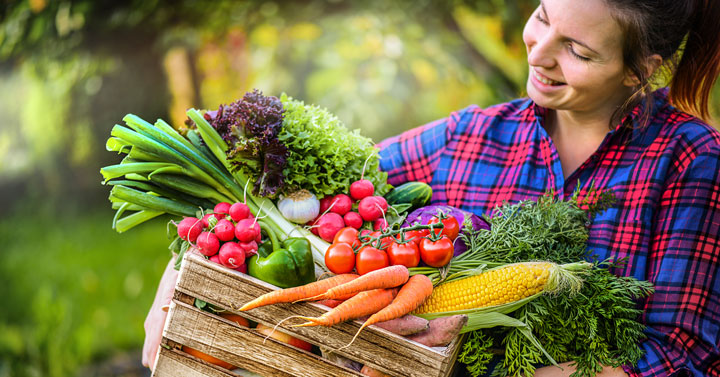Demand for biostimulants is growing rapidly, fueled in part by consumer trends toward wellness and organic produce, along with rising environmental concerns. Biostimulants contain organic substances such as humic acid, vitamins, hormones, and microorganisms that stimulate natural processes to enhance crop quality. When applied to plants or rhizosphere, biostimulants boost nutrient efficiency, resulting in increased root growth, greater water-holding capacity, and increased microbial activity.
“Population growth is another factor that is shifting attention to biostimulants,” says Dennis Fugate, Industry Manager for our Agriculture and Specialty Pesticide practice. The population is expected to increase from 7.3 billion in 2015 to 9.7 billion in 2050 — with global food demand projected to rise 59%-89% by 2050. “Biostimulants are expected to play a key role in significantly and sustainably increasing the yield of agricultural crops.”
Here are seven reasons why fruit and vegetable growers are adopting biostimulants.
1. Consistent Quality
Crop production is an expensive proposition, particularly crops that require irrigation and staking. Combined with high consumer demand for blemish-free produce, there is little margin for error. Thus, growers are increasingly looking for products that can help deliver consistently superior results. This is driving demand for biostimulants, which can enhance crop quality and improve shelf-life, color, and shape of fruits and vegetables.
2. Residue-Free Produce
The Environmental Working Group (EWG) publishes the “Dirty Dozen,” a list of fruits and vegetables that have the most pesticide residue — and that pose the greatest danger to consumers — when they are purchased as conventional produce. The 2021 issue states that nearly 70% of non-organic produce sold in the country contains pesticide residues, with more than 90% of samples having tested positive for residues of two or more pesticides.
The pressure to produce residue-free vegetables is driving growers to look for affordable alternatives that provide maximum flexibility with regard to controlling disease and harmful insects. Biostimulants increase plant resistance to abiotic stresses, thus increasing overall plant health and providing an opportunity to reduce or eliminate the quantity of pesticides used
3. Changing Growing Practices
In California, for example, tough-to-control pathogens and resistance development have been exacerbated by the installation of drip lines for multiple-year production. This enables produce to be grown more frequently. For instance, 95% of processed tomatoes are transplants, which also tends to enhance nematode infestations. Changing field practices often results in soil infestations that are even more serious. Biostimulants can improve root growth and vigor and suppress pathogens, offering an alternative to the use of fumigants and soil-applied pesticides.
4. Change in Regulations
Recent regulations have limited the use of fumigants. Growers are instead being encouraged to adopt programs that suppress soilborne disease and nematodes by using soil supplements that increase root growth. As a result, growers are increasingly shifting to utilizing biopesticides to target plant pathogens and enhance the crop plant’s own defense systems.
5. Solid Performance Data and Sound Labels
Biostimulant suppliers can provide sufficient data and precise recommendations to enable growers to use these products successfully. In contrast, the labeling on conventional products has been shown to not be consistently accurate (for example, breadth of crops supported) or backed up by data (for example, yield claims).
6. Cost
The cost of ingredients is reaching levels such that their use is becoming increasingly prohibitive. Fertilizer costs are at an all-time high. Biostimulants can improve the efficiency of fertilizer applications. True analysis, however, must include the total cost of application, as many products require multiple applications in order to be effective.
7. Receptive Audience
Vegetables and fruit growers tend to have large, long-term investments in their farms, and their crops are highly perishable. Thus, growers are particularly receptive to the positives associated with biostimulants, such as increased plant health, resistance to insects and diseases, greater drought tolerance, and higher yields.
About this blog:
7 Reasons Why Fruit and Vegetable Growers Are Embracing Biostimulants contains insights from Dennis Fugate, Industry Manager for Kline’s Agriculture and Specialty Pesticide practice. He is responsible for the syndicated market research reports covering all pesticide-related markets. Dennis has more than 30 years of experience in various ag and specialty pesticide markets. He began his career with Kline in 1996, working on various multiclient and proprietary studies. Previously, Dennis served in various capacities in the animal health and pest-control divisions of Zoëcon. He has also worked as a marketing manager for the biocontrol division of W.R. Grace.
Press inquiries:
Lance Debler
Content Marketing Manager
Kline & Company
+1-973-435-3425

